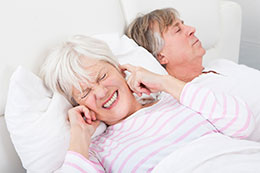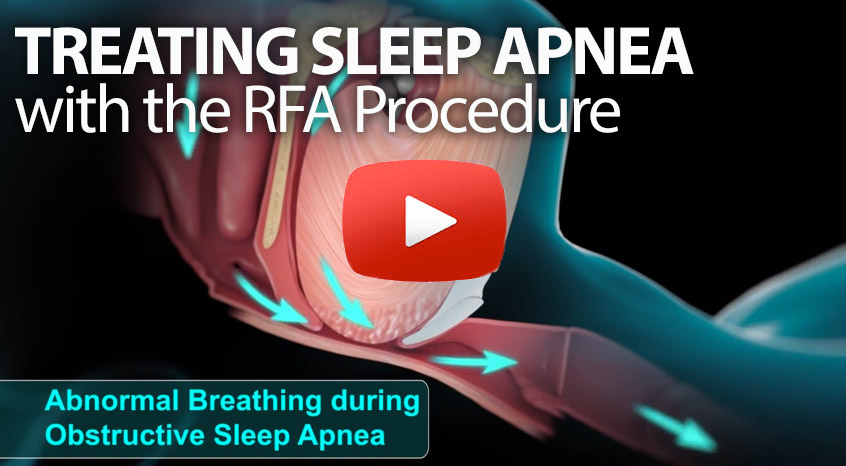Surgical Sleep Apnea Options
Nasal Reconstructive Surgery:
 Areas inside the nasal passages often contribute to breathing-related sleep disturbances, and should be addressed when treating sleep apnea. These conditions include:
Areas inside the nasal passages often contribute to breathing-related sleep disturbances, and should be addressed when treating sleep apnea. These conditions include:
- A deviated nasal septum
- Enlarged or hypertrophied nasal turbinates and nasal polyps.
Correction of both of these conditions can be accomplished as outpatient procedures, are tolerated well by patients, and can improve nasal airway flow during sleep.
Pros:
- Many types of nasal surgery can often be performed as outpatient procedures under general anesthesia are low risk, and well tolerated If the nasal airway is anatomically tight, limiting nasal airflow, CPAP use becomes more difficult and less well tolerated. Addressing these anatomic abnormalities is frequently necessary in order for CPAP to be tolerated and effective.
Cons:
- Surgical intervention and recovery is required.
- Some insurance companies may not reimburse for nasal surgery to treat sleep apnea, claiming these treatments to be medically unnecessary
Uvulopalatopharyngoplasty (UPPP)
Uvulopalatopharyngoplasty, or UPPP, is by far the most frequently performed surgical procedure for apnea in selected individuals. It has an approximately 40%-50% cure rate. This surgical intervention involves removal of excessive and redundant tissue from the soft palate (at the back of the throat). Tissue removed can include the uvula (the central finger-like tissue hanging in the midline back of the throat), part of the soft palate, tonsils and adenoids.
Laser Assisted Uvulopalatoplasty (LAUP):
This procedure employs the use of a laser to gradually trim the redundant tissue of the soft palate and uvula. LAUP was popular in the 1980s, was performed in the office under local anesthesia, and required follow-up treatment sessions until the desired result was obtained. The treatment was fairly painful, and many patients did not follow up for subsequent treatment sessions due to the pain. LAUP is no longer performed as frequently as in the past.
Pros:
- Can improve sleep apnea symptoms, but results show an approximately 40% overall cure rate for apnea.
- Can stop snoring, but sleep apnea-induced breathing interruptions may continue
Cons:
- Requires general anesthesia and a surgical intervention, and frequently an overnight hospital stay
- Recuperation is a moderately painful recovery process of about 2-3 weeks.
- Potential risks include difficulty swallowing; nasopharyngeal stenosis, or a narrowing of airway which connects the nose with the throat. This can result in a nasal quality to the voice with difficulty breathing through the nose.
- Speech can be temporarily or permanently affected by this surgery
- Risks of postoperative bleeding and infection.
Other treatment options
Hyoid Myotomy and Suspension – a surgical procedure to open up the posterior airway space in the lower part of the upper airway.
Tracheostomy – a surgical opening into the trachea or windpipe.
Maxillomandibular advancement – a surgical intervention to the mandible (jawbone) intended to expand the posterior airway
Genioglossus advancement – a surgical intervention intended to open the posterior air space behind the tongue
About Us
If you or someone you know is in need of a better night’s sleep, contact us for a no obligation consultation. We are the sleep specialists at Chevy Chase ENT located in the Virginia, Maryland, and Washington D.C. metro area dealing with sleep apnea and sleep-related problems. We can help diagnose your condition, recommend whether a sleep study would be beneficial, and offer you a variety of treatment options including CPAP, Radio Frequency Ablation (RFA) and more.

